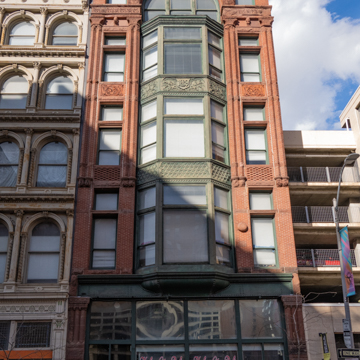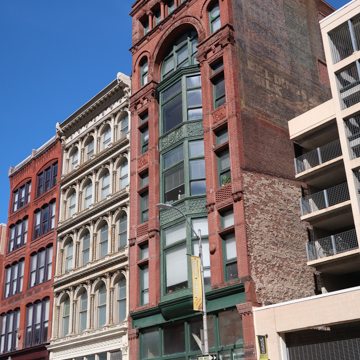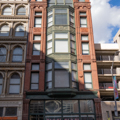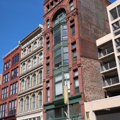This Renaissance Revival building exhibits the oldest and most distinctive of Baltimore’s few extant, full-scale decorative cast-iron facades. It was the work of Johnson, one of the nation’s leading designers of cast-iron architecture and an innovator in fireproof construction, and Bartlett, Robbins and Company of Baltimore, one of the nation’s foremost architectural ironworks. The production of cast-iron facades in the United States began in the mid-nineteenth century as a cheaper and more easily produced alternative to stone as both ornamental and structural building components. They remained popular until the turn of the twentieth century when replaced by structural steel that provided greater strength albeit without ornamentation. This building is distinctive in its use of twisted Venetian Gothic and Corinthian columns and floor-to-ceiling round-arched windows. It was constructed for Alberti, Brink and Company, fancy goods importers; used by garment manufacturers during the twentieth century; and more recently renovated as housing.
The adjacent ASA Building (1889; 318 Baltimore) is an unusually eclectic and ornate commercial structure that combines brick, brownstone, terra-cotta, and metal. A pressed-metal oriel window rises three stories, stressing the building’s verticality while brandishing Sullivanesque spandrels in organic foliated patterns. Terracotta is used to create playful animal heads, masks, solar disk motifs, and intertwining leaves and vines. The monogram ASA in the parapet is for original owner Arunah S. Abell, an industrialist and founder of The Sun as a “penny paper” in 1837.





